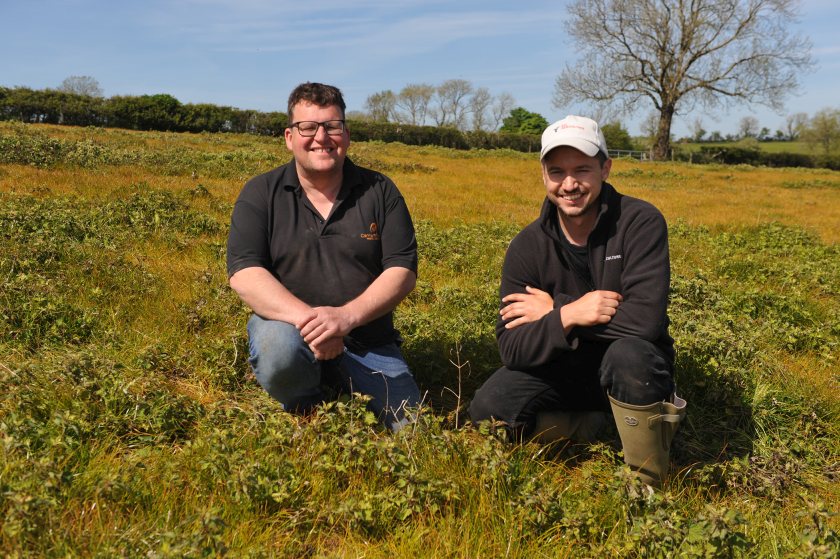
Tackling weeds could start below the surface - with smarter soil management offering farmers a chemical-free path to cleaner fields and healthier crops.
By rebalancing nutrients like calcium, farmers can weaken weeds at the root—literally—while boosting soil health and cutting input costs.
This is according to a recent Farming Connect event on Frowen Farm, a sheep and free range egg enterprise in Carmarthenshire, Wales.
Like many farmers, Ben Anthony and Diana Fairclough face ongoing challenges in managing thistles, docks and nettles on their 73-hectare holding.
During the event at their farm, agronomist Daniel Lievesley of DJL Agriculture suggested that imbalanced soil nutrition could be a major factor behind the annual resurgence of common weeds.
He said: “Weeds establish where there’s a nutrient deficiency. For example, docks mine for calcium, so if you address the calcium deficiency, you take away the very reason for the docks to be there.”
Mr Lievesley advised farmers to treat weeds not simply as nuisances, but as indicators of underlying soil issues.
“You will often find that the forage that grows around a weed is high in nutrients because the weed tap roots draw up minerals from deep in the soil to feed it.”
At Frowen Farm, soil sampling revealed that the clay soils are high in iron, which can bind up essential nutrients such as phosphorus and zinc.
Mr Lievesley recommended aeration and mineral correction as ways to address these imbalances.
Common weeds like nettles, chickweed and fat hen, he noted, often indicate high nitrate levels, while a lack of calcium tends to encourage docks and thistles.
When calcium levels are found to be low, hel advocates for the application of gypsum—a naturally occurring source of calcium sulphate.
This helps to adjust the calcium-to-magnesium ratio in the soil, ideally around 8:1, and frees up bound nutrients.
“Mined gypsum is a wonderful way to apply calcium sulphate to release the magnesium into the soil,” Mr Lievesley said.
However, he cautioned against using gypsum made from recycled plasterboard due to the presence of glues, resins and heavy metals, which may pose a risk to livestock.
At current market rates, gypsum costs between £20–£32 per tonne, depending on proximity to the quarry, with additional spreading charges of £5–£10 per acre. It is best applied ahead of rainfall to aid absorption.
Calcium also plays a key role in supporting mycorrhizal fungi—beneficial microbes that form networks with plant roots and improve soil health, which in turn reduces weed presence.
Event speaker and Farming Connect forestry specialist Geraint Jones highlighted the additional value of agroforestry in weed control.
Trees, he explained, offer natural suppression by casting shade, competing for soil nutrients, and forming a mulch layer with their leaf litter.
“Trees improve soil health and establish physical barriers to the spread of weed seeds,” said Mr Jones.
“Their root systems draw up nutrients from deeper soil layers and help store carbon in both roots and decomposing biomass.”
Many tree species, he added, form symbiotic relationships with mycorrhizal fungi.
“These fungi extend the reach of the tree’s root system, significantly increasing the surface area for nutrient and water absorption that they mine from deeper layers.”
In return, trees provide the fungi with carbohydrates, creating a mutually beneficial system that further boosts overall soil structure and fertility.
